BEST QUALITY RAW PRODUCTSRubber Products
Our Rubber Plantations
Rubber Tree Cultivation
We specialize in cultivating rubber trees (Hevea brasiliensis) for natural rubber production. Our plantations span tropical and subtropical regions, especially in Southeast Asia and western Africa. These robust trees have soft wood, high branching limbs, and a large area of bark.
Agroforestry Approach
Our commitment to sustainability extends beyond rubber monocultures. We embrace agroforestry systems, where rubber trees coexist with other useful plants. By intercropping rubber with fruit trees, timber species, shrubs, and medicinal herbs, we enhance ecosystem services and biodiversity. These systems also sequester carbon and diversify farmers’ incomes.

Rubber
Production Process
Tree Maturity: Our rubber trees mature over 5 to 7 years. Patience is key as they develop the latex-rich bark.
-
-
Tapping: We extract latex by tapping the tree bark. A downward cut at a specific angle releases the milky liquid containing approximately 30% rubber.
-
Coagulation and Processing: The latex is coagulated and processed into solid products, including tires. Concentrated latex is used for dipped goods like surgical gloves.
-
Community Engagement
Empowering Farmers
We collaborate with local communities, providing employment opportunities and education. By embracing sustainable practices, we ensure a brighter future for both our rubber trees and the people who care for them.
Social Responsibility
Empowering Local Communities
Our commitment extends beyond environmental stewardship. We believe in empowering local communities:
Contact Us
Visit our website at Limbe branch Office to learn more about our rubber tree cultivation, products, and community initiatives. Feel free to reach out to us for inquiries or partnerships.
Research and Innovation
Advancing Sustainable Practices
-
Research Partnerships: We collaborate with universities and research institutions to explore innovative solutions. From improving seed germination to optimizing water usage, our goal is continuous improvement.
-
Technology Adoption: We invest in modern agricultural technologies, such as precision farming and remote sensing. These tools help us monitor plant health, detect diseases early, and reduce resource wastage.
Join Us in Our Mission
Visit our Limbe branch office to learn more about our sustainability initiatives, community projects, and the fascinating world of palm trees and rubber trees.
Consistency
Improvement
Branching
Investment Plan



